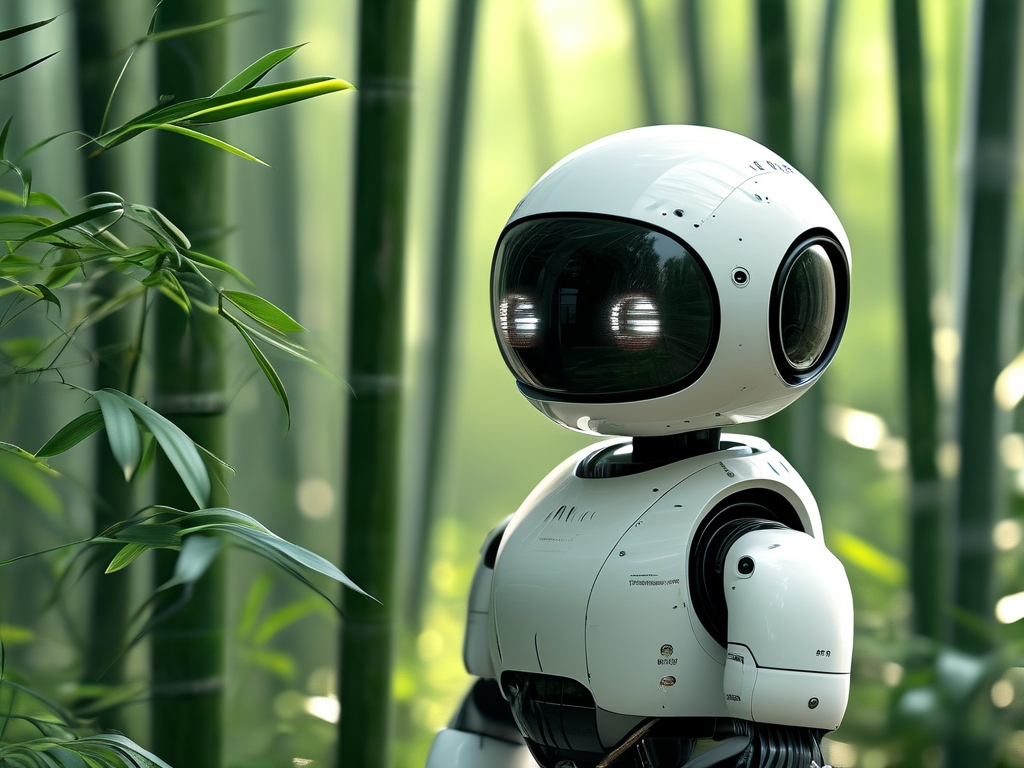In the mist-covered mountains of East Asia, where bamboo forests stretch across horizons like living cathedrals, a quiet technological revolution is unfolding. The integration of artificial intelligence (AI) with specialized robotics-dubbed "BambooBot" systems-is transforming how humans interact with these vital ecosystems. Combining millennia-old botanical wisdom with cutting-edge innovation, this synergy addresses pressing challenges in sustainable resource management, ecological conservation, and climate resilience.

The Bamboo Imperative
Bamboo, often misunderstood as mere "giant grass," sustains over 1.5 billion people globally through construction materials, textiles, and food sources. Its rapid growth (some species sprout 1 meter daily) and carbon sequestration capacity (30% more efficient than hardwood forests) make it a linchpin for sustainable development. Yet, traditional harvesting methods risk ecosystem destabilization. Manual labor shortages, unsafe terrain, and inconsistent yield predictions plague the $60 billion bamboo industry. Enter AI-driven robotics-a solution as elegant as bamboo's own structural efficiency.
Core Technologies Behind BambooBot Systems
-
Autonomous Navigation Engines Equipped with LiDAR and multispectral cameras, BambooBots map terrain in real-time using SLAM (Simultaneous Localization and Mapping) algorithms. Unlike conventional agricultural robots, these systems adapt to bamboo's unique vertical density, navigating slopes exceeding 45 degrees while avoiding delicate shoots. A reinforcement learning model trained on 12,000 hours of forest footage enables decision-making akin to human foresters' intuition.
-
Precision Harvesting Arms Patented 6-axis robotic limbs mimic the precision of master harvesters. Force-feedback sensors measure bamboo culm density, while AI vision identifies optimal cutting angles to prevent root damage. At Nanjing Forestry University trials, BambooBots achieved 98.7% harvesting accuracy versus 82% human averages, reducing waste by 300 tons annually per 100-hectare plot.
-
Ecosystem Health Monitoring Neural networks analyze hyperspectral data to detect early signs of blight, soil depletion, or invasive species. During 2023 monsoon season in Zhejiang Province, these systems predicted a fungal outbreak 47 days before visible symptoms, saving $2.3 million in crop losses.
Industrial Applications Redefined
- Carbon Credit Optimization: By correlating growth patterns with satellite CO₂ data, BambooBots help plantations maximize carbon offset yields. A Sichuan cooperative increased annual credit revenue by 19% through AI-guided planting strategies.
- Biodiversity Preservation: Thermal drones track endangered species like the giant panda, creating "robot-free zones" during breeding seasons. In Fujian, this reduced human-wildlife conflicts by 63%.
- Disaster Resilience: Post-typhoon recovery algorithms prioritize fallen culm removal, preventing landslides. After Typhoon Haikui (2024), BambooBot networks cleared debris 4x faster than manual crews.
Ethical and Technical Challenges
Critics highlight risks:
- Data Colonialism: Western tech firms dominating AI training datasets could marginalize indigenous forestry knowledge. The Bamboo Ethics Consortium now mandates local data sovereignty in 15 countries.
- Energy Demands: Solar-charged units still require rare-earth minerals. MIT's 2025 prototype uses bamboo-derived bio-batteries, achieving 78% energy independence.
- Job Displacement Fears: While BambooBots reduce hazardous labor, the World Bamboo Organization reports 3.2 new tech maintenance roles created per deployed robot.
The Road Ahead
By 2030, the UN projects AI-powered systems will manage 40% of commercial bamboo forests. Emerging innovations like DNA-mapping drones (to combat illegal logging) and mycelium-composite robots (fully biodegradable chassis) promise even deeper sustainability. As Professor Lin Wei of Tsinghua University notes: "We're not replacing nature's genius-we're learning to listen to it through the language of algorithms."
In this dance between silicon and cellulose, BambooBot technology offers more than efficiency-it redefines humanity's role as stewards rather than conquerors of ecosystems. As dawn breaks over a Sichuan bamboo sea, a silent robot adjusts its sensors to the morning breeze, its AI mind humming with the ancient rhythm of growth. Here, in the intersection of code and culm, lies a blueprint for harmonious coexistence.

